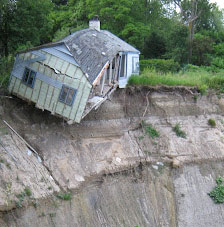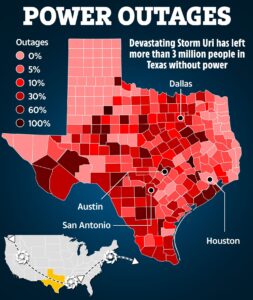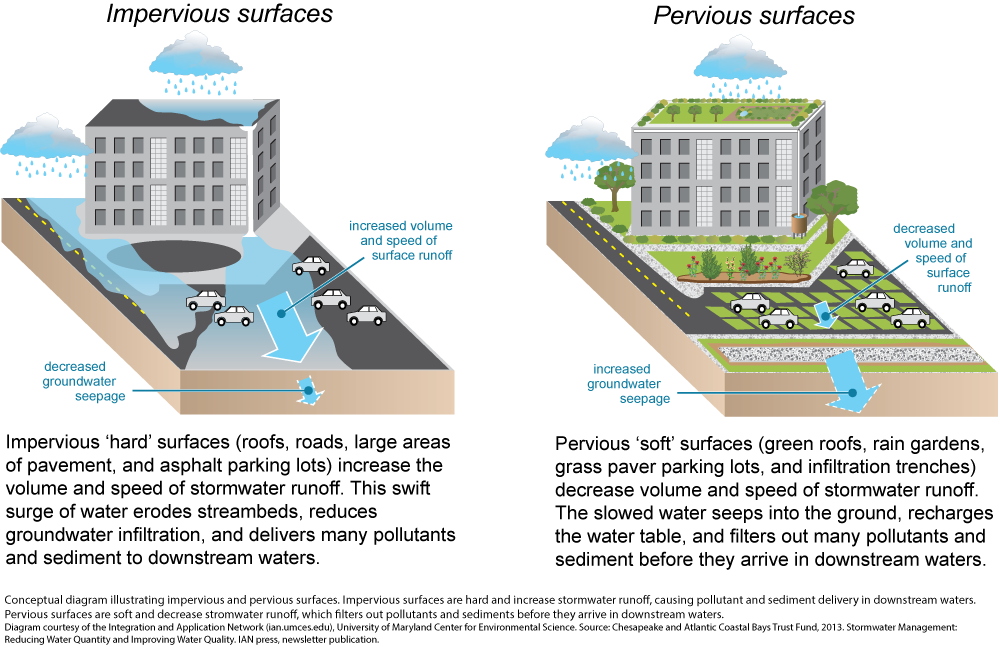
What Makes a Climate Resilient Home?
Resilience comes in many forms. Generally speaking, resilience is the ability to withstand and recover from adverse events and outside forces. It is a core attribute to the survival of just about all living things, as well as the longevity of inanimate objects alike. From trees to tires, the more resilience something has, the longer it is likely to be around – and that’s almost always a good thing, perhaps with the exception of diseases and pests.
A new home is a significant investment. No one builds a house with the intention of knocking it down and rebuilding it every few years, and for obvious reasons. Building a resilient home is therefore just as important as building a beautiful home.
Climate resilient homes are nothing new. The main reason humans have sought and built shelter since the beginning of time is for protection from the elements. Fortunately we are living in a time where we have thousands of years of technological advances that go into the design and construction of our modern homes. These home technologies keep us warm in the winter, cool in the summer and dry when it rains.

The thing is, the climate today isn’t what it was a hundred years ago, or even just a few decades ago. Climate change is a forefront issue in the world today and rightfully so. It affects every country on every continent. From rising annual temperatures and sea levels, to increased frequency of floods and periods of drought, to more extreme weather patterns and events; climate change is impacting just about every aspect of life as we know it, from economies to ecosystems, and it is only projected to intensify in the coming decades.
A recent report shows that ‘Canadians are unknowingly buying homes in climate change danger zones‘. As such, we wanted to take some time to discuss what makes a climate resilient home.
So what makes a climate resilient home?
In short, dozens of factors and technologies go into the design and build of climate resilient homes. Depending on where in the world you are building, certain factors will have more importance than others.
In Canada for example, temperatures can range from +35c to -40c, so considerations around extreme temperature fluctuations are much more vital. In comparison, homes built in South East Asia would prioritize stormwater management to deal with annual monsoons. These regional considerations can even vary from region to region within a single country, coastal vs inland, north vs south, etc. Let’s dive into some of the various considerations that go into building climate resilient homes.

Site selection for climate resilient homes
One of the premier considerations that goes into a climate resilient home is site selection. Developers of resilient homes choose the location and position of the home with a number of factors in mind. These include smart siting strategies to protect from flood plains, wind tunnels, eroding cliffs, forest fires and other areas where extreme climate events pose a greater risk of harm or destruction.
Going further, developers can utilize natural surroundings such as hills or forests to help shelter a home from the elements. Developers who choose to utilize solar panels or solar roofing may also take the sun’s path into consideration for maximizing energy generation. Here is where we start getting into the design of resilient homes.
Climate resilient design and values
 A key value of climate resilient design is making homes more autonomous. In early 2021, we saw how storms knocked out power grids in Texas for days, leading numerous people to freeze to death or succumb to C02 poisoning as they tried to keep their homes warm with propane barbecues. This is just one example of many in recent years where the need for climate resilient homes has been highlighted.
A key value of climate resilient design is making homes more autonomous. In early 2021, we saw how storms knocked out power grids in Texas for days, leading numerous people to freeze to death or succumb to C02 poisoning as they tried to keep their homes warm with propane barbecues. This is just one example of many in recent years where the need for climate resilient homes has been highlighted.
The most climate resilient homes are therefore the least reliant on external inputs such as municipal utilities including gas, electricity, water, etc. Climate resilient homes ideally utilize technologies such as solar energy, water collection systems, geo-thermal heating, and above all else are well insulated to reduce the reliance on both heating and cooling systems as well as general energy consumption.
As an added bonus, these technologies all work towards reducing greenhouse gases and other factors which contribute to human caused climate change.
Stormwater management and climate resilient homes
In the previous section we talked about utilizing water collection systems as a way to decrease reliance and the strain put on public utilities. Another important consideration surrounding water is how homes manage stormwater. The more impermeable surfaces a property has, the less opportunity there is for the ground to absorb the surge of water that is let loose during a significant rainfall. Consequently, this can lead to flooding.

Climate resilient design therefore utilizes practices that allow the earth around a home to absorb the water, feeding it back into the groundwater table. Additionally this water supports trees and other vegetation surrounding a home, which absorb the excess water and in turn provide shade and wind resistance to the home and assist in converting C02 to oxygen.
Quality craftsmanship is essential to climate resilient homes
Quality craftsmanship is another core value to creating climate resilient homes. A home with a solid foundation, integral core, and a well secured exterior will help to ensure that the home can withstand decades of abuse from the elements.
Quality craftsmanship also means you will be able to enjoy the home with longer periods between major maintenance such as re-roofing or siding a house. These not only have economic advantages to the homeowner, but again reduce a home’s carbon footprint and strain on the environment.
Conclusion
We have discussed several core principles and concepts that go into building climate resilient homes. In a perfect world, all of these concepts would be applied to all new homes, but we know the world is far from perfect.
Hundreds of years ago our ancestors decided to build communities in geographical regions that are far from ideal when we consider the climate challenges that they carry. As Canadians, we know this all too well. With that in mind, there are best practices that should be utilized in order to create long lasting, sustainable homes. Doing so will ensure our homes withstand and protect us from the increasingly fierce climate we find ourselves in, while also reducing factors that contribute to human caused climate change.
URBINCO homes are designed and built to bear the heat of Toronto summers as well as it’s sub-zero winters. We strive to create energy efficient homes that will withstand the test of time and keep you and your family safe from the elements. This resilience is evident in the quality of the craftsmanship that goes into our new homes. Investing in an URBINCO built home isn’t just an investment in the present, but an investment in your future. View our available and upcoming projects here.
featured photo credit Andre Furtado
